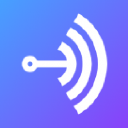The $6K/Month Website That Teaches How To Launch Businesses And Build Apps With No-Code Tools
Hello! Who are you and what business did you start?
Hi! My name is Seth Kramer and I’m the founder of No Code MBA. I started the company about 6 months ago to teach people how to launch businesses and build apps using no-code tools.
No Code MBA consists of over 150 (and growing) real-world video lessons building apps like Tinder, Zillow, and Product Hunt. The site offers both free and paid courses. The paid courses are all under the No Code MBA Unlimited membership - so when a customer signs up they get access to all courses on the site.
Since starting, I have over 400 paid No Code MBA members, and am quickly growing that number each month.

What's your backstory and how did you come up with the idea?
I’ve been an entrepreneur for almost 10 years now - I started my first...

Download the report and join our email newsletter packed with business ideas and money-making opportunities, backed by real-life case studies.

Download the report and join our email newsletter packed with business ideas and money-making opportunities, backed by real-life case studies.

Download the report and join our email newsletter packed with business ideas and money-making opportunities, backed by real-life case studies.

Download the report and join our email newsletter packed with business ideas and money-making opportunities, backed by real-life case studies.

Download the report and join our email newsletter packed with business ideas and money-making opportunities, backed by real-life case studies.

Download the report and join our email newsletter packed with business ideas and money-making opportunities, backed by real-life case studies.

Download the report and join our email newsletter packed with business ideas and money-making opportunities, backed by real-life case studies.

Download the report and join our email newsletter packed with business ideas and money-making opportunities, backed by real-life case studies.

















